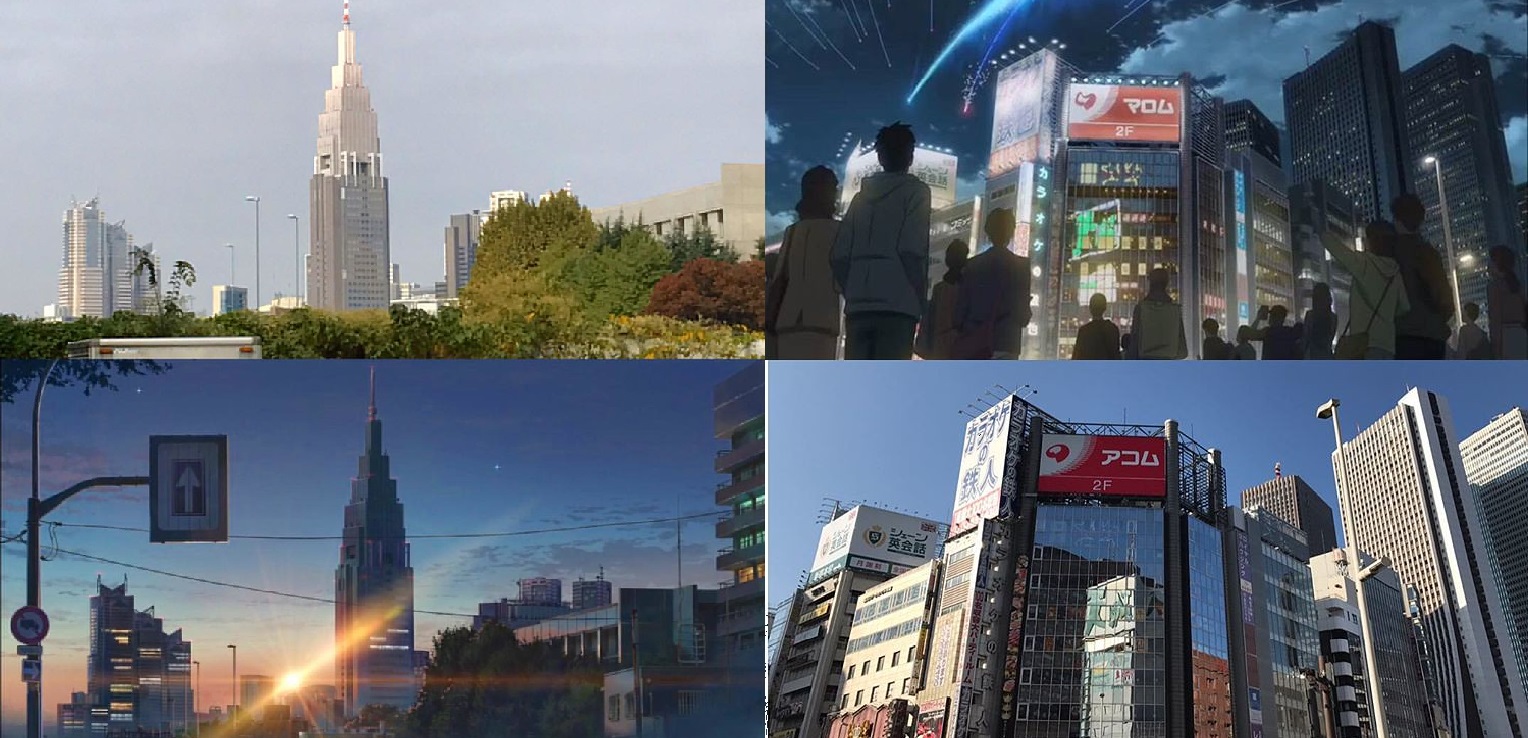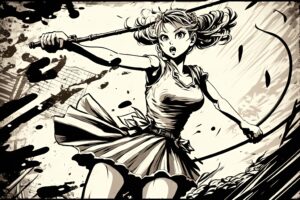Unveiling Tokyo’s Anime and Manga Pilgrimage Sites:
Anime and manga site pilgrimages, commonly referred to as Seichijunrei (聖地巡礼) in Japanese, have burgeoned into a cultural phenomenon within the vibrant landscape of Japan. These pilgrimages witness ardent fans embarking on journeys to real-life locations intricately featured in their cherished manga or anime series, fostering an intimate connection that bridges the gap between the realms of fiction and reality.
To buy pilgrimage guides directly from Japanese shopping sites, try Shoply Japan!
This surge in the popularity of pilgrimages stands as a testament to the profound impact these narratives hold on fans globally, seamlessly transcending the boundaries that delineate imagination from tangible experiences. The pilgrimage sites are not confined to bustling city neighborhoods alone but are also nestled in serene villages and picturesque natural locales, creating a diverse tapestry for enthusiasts to explore and bring to life the vivid stories etched in their hearts.
In the sprawling panorama that is the Japanese archipelago, these intricately woven Seichijunrei (Anime and Manga Pilgrimage locations) symbolize not just the physical sites of the stories but evoke a sense of jimoto (地元) or “hometown area” for Japanese fans and embody narrative essences that resonate with fans from around the world as they traverse the settings that inspired their beloved stories.
The pilgrimage experience extends beyond the cityscape, capturing the essence of each season, character, and cinematic moment etched into the collective memory of fans. Tokyo transforms into a living canvas, inviting enthusiasts to retrace the footsteps of their favorite characters, explore the seasons that shaped pivotal scenes, and relive the magic of cherished movies and anime series.
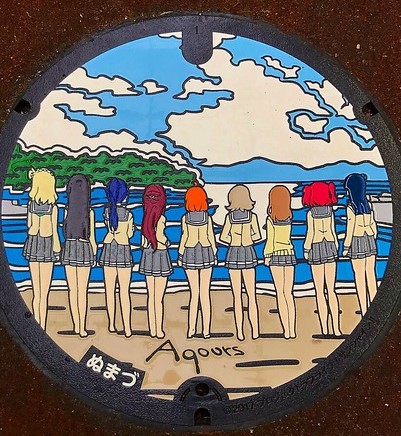
We embark on our exploration of these pilgrimage sites of Japan’s modern literature in Tokyo’s 23 wards, the beating heart of this multifaceted metropolis, and uncover a tapestry of iconic sites scattered across its dynamic landscape. Tokyo Prefecture, spanning 2,194 square km (847 square miles), is a vast and dynamic capital state that seamlessly transitions from expansive rural vistas to the pulsating energy of Japan’s most densely populated urban centers.
To buy authentic anime products directly from Japanese shopping sites, try Shoply Japan!
Nestled within this sprawling region lies the core of Tokyo’s urban life – the 23 special wards. Collectively known as the city’s “downtown,” these wards, essentially smaller cities within the greater megalopolis, offer a fascinating blend of modernity and tradition. As we traverse the labyrinthine streets of Shibuya, Shinjuku, Harajuku, and other neighborhoods, the juxtaposition of sleek skyscrapers against the backdrop of ancient temples and serene parks becomes evident. Tokyo’s 23 wards not only encapsulate the essence of urban living but also unveil hidden gems within their borders, providing a diverse canvas for the pilgrimage sites that beckon fans to tread upon the footsteps of their favorite characters.
Exploring these wards reveals a tapestry of cultural and architectural wonders, each contributing to the rich fabric of Tokyo’s identity. From the neon-lit streets of Akihabara, the mecca of otaku culture, to the historic districts of Asakusa and Ueno, where traditional festivals and centuries-old temples coexist with modern amenities, Tokyo offers a sensory feast for pilgrims seeking to immerse themselves in the world of anime and manga.
As we delve deeper into Tokyo’s labyrinthine streets, we encounter not just iconic landmarks but also hidden corners waiting to be discovered. From quaint cafes frequented by manga artists to underground art galleries showcasing the latest in anime-inspired artwork, Tokyo’s vibrant subculture scene pulsates with creativity and innovation, drawing pilgrims from far and wide to partake in its offerings.
To buy authentic manga products directly from Japanese shopping sites, try Shoply Japan!
Tokyo’s anime and manga pilgrimage sites offer a captivating journey through the cultural heart of Japan. As fans embark on their pilgrimage quests, they not only pay homage to their favorite series but also gain a deeper appreciation for the city of Tokyo and its enduring influence on the world of anime and manga. Whether wandering the bustling streets of Shibuya or exploring the tranquil parks of Shinjuku, each pilgrimage site tells a story of its own, weaving together the past, present, and future of Japan’s rich cultural heritage.
Jujutsu Kaisen 呪術廻戦:
“Jujutsu Kaisen” is a manga and anime series created by Gege Akutami that has captured the hearts of millions of fans worldwide. Launched as a manga in March 2018 and later adapted into its anime version in October 2020

Young sorcerers attending a school of magic in Tokyo, the Tokyo Prefectural Jujutsu High School, use their powers to battle and exorcise monsters and cursed spirits born from negative human emotions like bitterness, regret, and shame that lead people to death. When the seal of a powerful “curse” is broken, high school student Kojo enters a world of battles along with other sorcerers that revolve around these curses. Many of these battles take place in some of Tokyo’s most well-known neighborhoods…
You can buy Jujutsu Kaisen manga and other products directly from a wide variety of Japanese shopping sites, try Shoply Japan!
Harajuku and Shibuya:
Some of the major events in the stories take place in the Harajuku and Shibuya areas of Tokyo, a hub of youth culture and all hours activity.
In a scene from episode 3 of the anime, Yuji Kojo and the first-year Jujutsu school members meet at Harajuku Station, the gateway to Harajuku, an epicenter of Japanese youth culture and fashion located between Shibuya and Shinjuku on the JR Yamanote train line, Tokyo’s circular roundabout train line.
In another scene from the same episode, the character arrives in Harajuku and visits Takeshita Street (Takeshita Dori), a popular shopping street at the Takeshita Exit of Harajuku Station (the exit nearest to the Shinjuku direction of the Yamanote Line). Takeshita Dori stretches from Harajuku Station all the way down to Meiji Dori (Meiji Ave.), a major street that serves as the border between Harajuku and Omotesando, an upscale shopping and fashion district in Tokyo.
To find the latest Harajuku styles and products available on Japanese shopping sites, visit Shoply Japan!
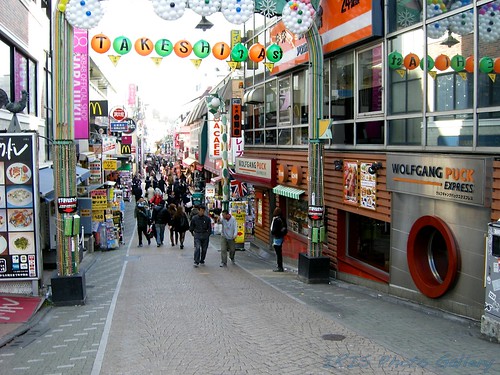
“The Shibuya Incident” is a multi episode account of a dark magic terrorism attack that takes place in a variety of locations scattered in and around Shibuya. As the suspense builds towards the “incident”, the characters Kojo, Meimei, and Yuu meet up at Exit 2 of Meiji Jingu Mae (literally “In Front of Meiji Shrine” Station), the nearest location for passengers to transfer between the Tokyo Metro Chiyoda Line and the Yamanote loop line at Harajuku Station. This site is also nearest to the entrance of the Meiji Shrine complex and Yoyogi Park, one of Tokyo’s largest and most popular parks. In the opposite direction you can enter Harajuku’s labrynth of small intimate shopping and dining streets.
Heading down the Yamanote line one stop in the Shinagawa direction we arrive at Shibuya, a city that has for years served as a shopping and party district for Tokyo’s adolescent and college crowd. Jujutsu Kaisen pilgrimage sites in the “Shibuya Incident” are scattered throughout the area around the station and include non-descript side streets as well as major destinations like the famous Shibuya “Scramble” Crossing, “Hikarie” one of Shibuya’s newest office towers located on the east side of Meiji Dori from Shibuya station, the Tokyo Metro Fukutoshin Line Platform, and Marui Department Store chain’s Shibuya MODI shopping mall.
To search for Japanese products related to Tokyo’s hip Shibuya neighborhood, such as visitor guides, discount attraction tickets, and popular products, visit Shoply Japan!
Other Tokyo Jujutsu Kaisen pilgrimage neighborhoods can be found in Shinjuku: the public art installation known as the “Shinjuku Eye” located in the underground concourse on the west side of Shinjuku Station, as well as the massive network of pedestrian bridges connecting Shinjuku Station’s West side with the offices and neighborhoods in Nishishinjuku. .
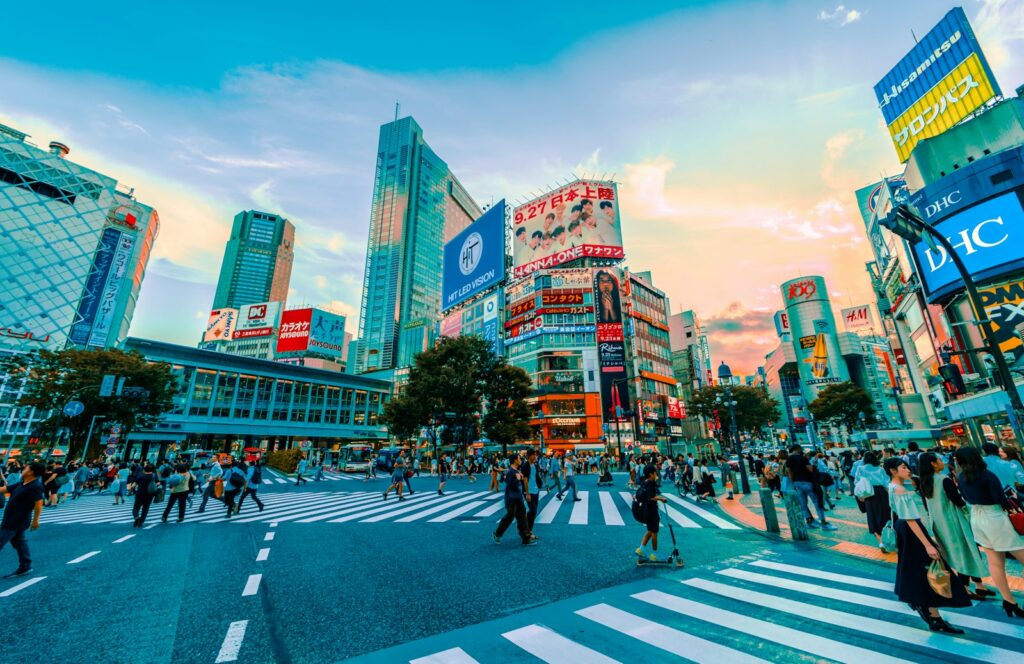
Other Jujutsu Kaisen locations you might want to check out are Japan’s tallest and newest tower, the Tokyo Skytree in the historical Sumida District, where Satoru Gojo once looked out over the night sky of the city; Ueno Zoo in the Ueno neighborhood, where the character Panda goes to watch the panda bears; and Kichijioji Park Road in western Tokyo’s trendy Kichijioji neighborhood, where the strange scene of the character Masato standing on the street and licking his fingers occurs. Of course this is just a small sampling of locations appearing in Jujutsu Kaisen and there are so many more in Tokyo and across the country.
One Punch Man ワンパンマン:
Another manga that went to anime series, One Punch Man is about the main character, Saitama, who has the power to defeat any enemy with just one punch. It was created by the manga writer ONE (a pseudonym), to practice using a manga creating software for PCs called “ComicStudio”. It was first published in June 2011 in manga form and in anime form from October 2015. It premiered in the US on Adult Swim in July 2016 and consequently has an overseas following. There is a plan in place to release a live action version in the US.
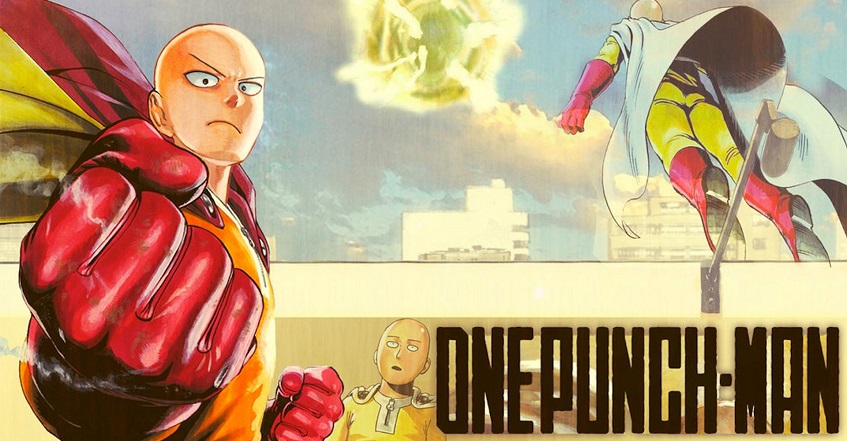
The main character, Saitama, dreams of becoming a hero one day and trains so hard that he finaly achieves the power to defeat any enemy with just one punch. However, his training was so hard that all his hair fell out so he is bald. He is mentored by a cyborg named Genos and joins him to fight monsters, demons and bad guys, but his fights end so quickly and easily that he still ends up finding his life boring and monotonous. Saitama and Genos eventually are eventually able to gain membership in the “Hero Association” that had been created by a millionaire named Agoni, however they are placed in a lower rank than they feel is deserved due to poor test scores, a shoutout to Japan’s strict and often impractical exam system for a large number of educational and professional certifications.
The story takes place in City Z, a fictional location on a supercontinent of a distant planet, making the pilgrimage locations in Tokyo inspirationalbut not literal locations in the story, and fans spend a lot of time and energy debating about where these locations actually are since ONE has never said where he based his story locations on. Some fans have taken to hunting down and photographing these sites, after which they are uploaded and debated online with other fans.
To search for One Punch Man products on shopping sites in Japan, visit Shoply Japan!
One of the areas in Tokyo believed to be a model for several scenes in the story is the popular Kichijioji neighborhood, located to the west of Shinjuku on the JR Chuo line in Musashino City. A few investigators see many similarities between scenes in the story and several locations around the Kichijioji Station north exit.
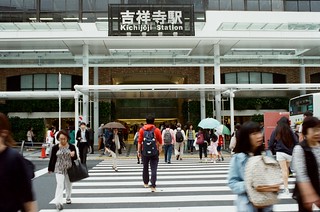
A holy grail for OPM fans also is the apartment where Saitama lives in the story. Several people have claimed to have found an almost exact match on the north side of Meidai Mae Station where the Keio Inokashira and Main Lines intersect, under the Koshu Kaido highway.
Other areas of debate for Saitama’s activities include the Mitaka Station area on the JR Chuo Line, various spots around Shinjuku Station, and the Takadanobaba neighborhood on the JR Yamanote and Tokyo Metro Tozai line near Waseda University.
The manga artist “ONE” who created One Punch Man is a bit of a mysterious character, there aren’t many photos of him online, and he’s originally from Niigata in the north and no one knows his current living area, so knowing exactly where the locations that inspired his work actually are will remain up for debate. Interestingly though, most of the hotly claimed sites for story locations are all near the Kichijioji area in west Tokyo, Meidaimae being just nine stops down the Keio Inokashira line from Kichijioji, and Mitaka just one stop away on the JR Chuo line.
It is said that manga writers tend to draw inspiration from the locations nearby where they do their writing, since they spend so much of their time there. And Kichijioji is known to be a popular place for manga and anime artists to live due to its reputation for being an active area for subcultures, making it a likely candidate for some of the locations. At any rate, it seems manga and anime fans love a good pilgrimage site mystery.
Let’s continue exploring sites in Tokyo In the next installment of this series on manga and anime pilgrimage sites.
